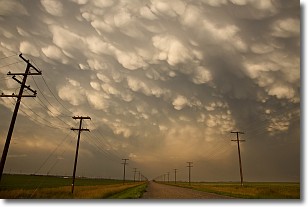Weather Alert in Florida
Flood Watch issued May 11 at 5:36PM EDT until May 13 at 8:00AM EDT by NWS Miami FL
AREAS AFFECTED: Glades; Hendry; Inland Palm Beach County; Metro Palm Beach County; Coastal Collier County; Inland Collier County; Inland Broward County; Metro Broward County; Inland Miami-Dade County; Metropolitan Miami Dade; Mainland Monroe; Coastal Palm Beach County; Coastal Broward County; Coastal Miami Dade County; Far South Miami-Dade County
DESCRIPTION: * WHAT...Flooding caused by excessive rainfall is possible. * WHERE...Portions of southeast, southern, and southwest Florida, including the following areas, in southeast Florida, Coastal Broward County, Coastal Miami Dade County, Coastal Palm Beach County, Far South Miami-Dade County, Inland Broward County, Inland Miami-Dade County, Inland Palm Beach County, Metro Broward County, Metro Palm Beach County and Metropolitan Miami Dade. In southern Florida, Glades and Hendry. In southwest Florida, Coastal Collier County, Inland Collier County and Mainland Monroe. * WHEN...From Monday morning through Tuesday morning. * IMPACTS...Excessive runoff may result in flooding of rivers, creeks, streams, and other low-lying and flood-prone locations. Flooding may occur in poor drainage and urban areas. * ADDITIONAL DETAILS... - Periods of steady moderate to heavy rainfall are expected Monday morning through Monday night. A general 3-6" of total rainfall are forecasted with locally higher amounts in excess of 7-8" possible. - http://www.weather.gov/safety/flood
INSTRUCTION: You should monitor later forecasts and be alert for possible Flood Warnings. Those living in areas prone to flooding should be prepared to take action should flooding develop.
Want more detail? Get the Complete 7 Day and Night Detailed Forecast!
Current U.S. National Radar--Current
The Current National Weather Radar is shown below with a UTC Time (subtract 5 hours from UTC to get Eastern Time).

National Weather Forecast--Current
The Current National Weather Forecast and National Weather Map are shown below.

National Weather Forecast for Tomorrow
Tomorrow National Weather Forecast and Tomorrow National Weather Map are show below.

North America Water Vapor (Moisture)
This map shows recent moisture content over North America. Bright and colored areas show high moisture (ie, clouds); brown indicates very little moisture present; black indicates no moisture.

Weather Topic: What are Mammatus Clouds?
Home - Education - Cloud Types - Mammatus Clouds
 Next Topic: Nimbostratus Clouds
Next Topic: Nimbostratus Clouds
A mammatus cloud is a cloud with a unique feature which resembles
a web of pouches hanging along the base of the cloud.
In the United States, mammatus clouds tend to form in the warmer months, commonly
in the Midwest and eastern regions.
While they usually form at the bottom of a cumulonimbis cloud, they can also form
under altostratus, altocumulus, stratocumulus, and cirrus clouds. Mammatus clouds
warn that severe weather is close.
Next Topic: Nimbostratus Clouds
Weather Topic: What is Precipitation?
Home - Education - Precipitation - Precipitation
 Next Topic: Rain
Next Topic: Rain
Precipitation can refer to many different forms of water that
may fall from clouds. Precipitation occurs after a cloud has become saturated to
the point where its water particles are more dense than the air below the cloud.
In most cases, precipitation will reach the ground, but it is not uncommon for
precipitation to evaporate before it reaches the earth's surface.
When precipitation evaporates before it contacts the ground it is called Virga.
Graupel, hail, sleet, rain, drizzle, and snow are forms of precipitation, but fog
and mist are not considered precipitation because the water vapor which
constitutes them isn't dense enough to fall to the ground.
Next Topic: Rain
Current conditions powered by WeatherAPI.com




